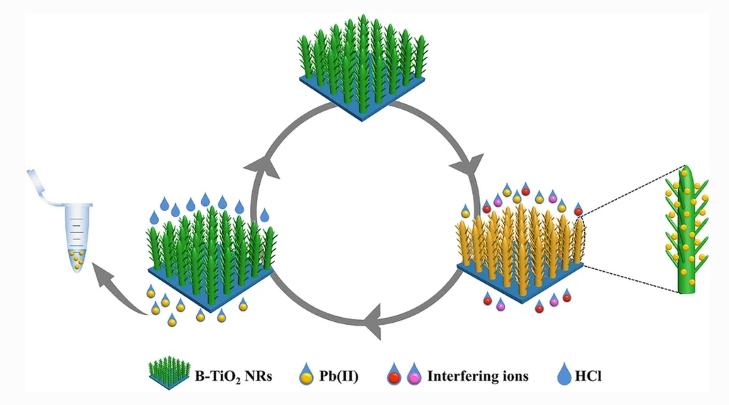Abstract
Branched titanium dioxide nanorods (B-TiO2 NRs) grown on fluorine-doped tin oxide glass (FTO) were developed, which can be used as a solid-phase extractant for preconcentration and determination of trace Pb(II) combined with inductively coupled plasma optical emission spectrometry (ICP-OES). The B-TiO2 NR-based glass substrate displayed excellent adsorptive selectivity and capacity for Pb(II); the maximum adsorption capacity was found to be 168.4 mg.g(-1) PB(II) at pH = 5.0. It proved that the primary extraction mechanism was attributed to soft acid/soft base interactions to form complexes for chemisorption. Investigating the adsorption kinetics and isotherms indicated that the pseudo-second-order and Langmuir models can better describe Pb(II) adsorption on the B-TiO2 NRs. The proposed method presented good linearity from 0.01 to 5 mg.L-1 with a correlation coefficient (R-2) of 0.9989 and a low limit of detection (LOD) of 2.2 mu g.L-1 for Pb(II) under optimal conditions. The method was successfully applied to Pb(II) determination in foodstuffs with desirable recoveries from 93.18 to 108.1% and good precision with an RSD of less than 12.2%. This work provides a new strategy for selective extraction and determination of Pb(II) in complicated matrix samples.

Keywords Plus:SOLID-PHASE EXTRACTIONSIZE TITANIUM-DIOXIDEAQUEOUS-SOLUTIONSWATER SAMPLESMETAL-OXIDESIONSADSORPTIONREMOVALSEPARATIONSORBENT
Published in MICROCHIMICA ACTA,Volume189;10.1007/s00604-022-05315-4,JUN 2022


